It is impossible to imagine a modern-day household without any light bulbs. It is the single most common electrical appliance found in every household all over the globe.
However, they do come in various shapes and sizes. Especially their bases can dictate their type. So, how do I know what base my light bulb is?
Most of the time there will be information regarding the bases along with the packaging of the light bulb. But if it is an old bulb and you have lost the packaging, you can easily look up the chart provided here to figure out which base you have.
So, without further ado, let’s move on to the different types of bases and their functionalities. I will also provide a table or chart regarding different light bulb bases so that you may easily identify them.
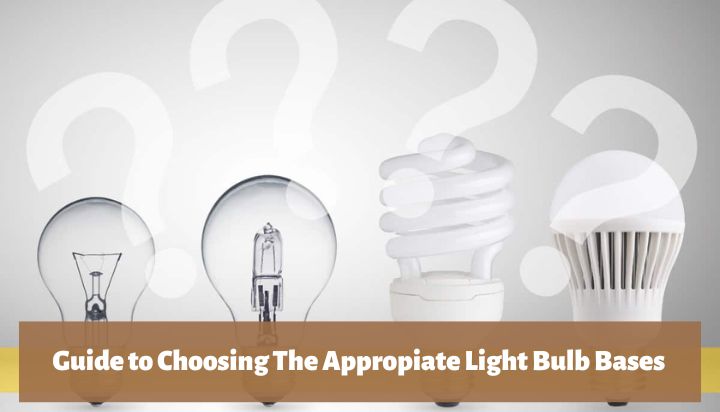
What Is the Use of a Light Bulb Base?
Light bulbs require a base or a connection module to connect to the socket where they may be housed. The light bulb base provides a secure connection with the light bulb socket so that it may not fall out easily.
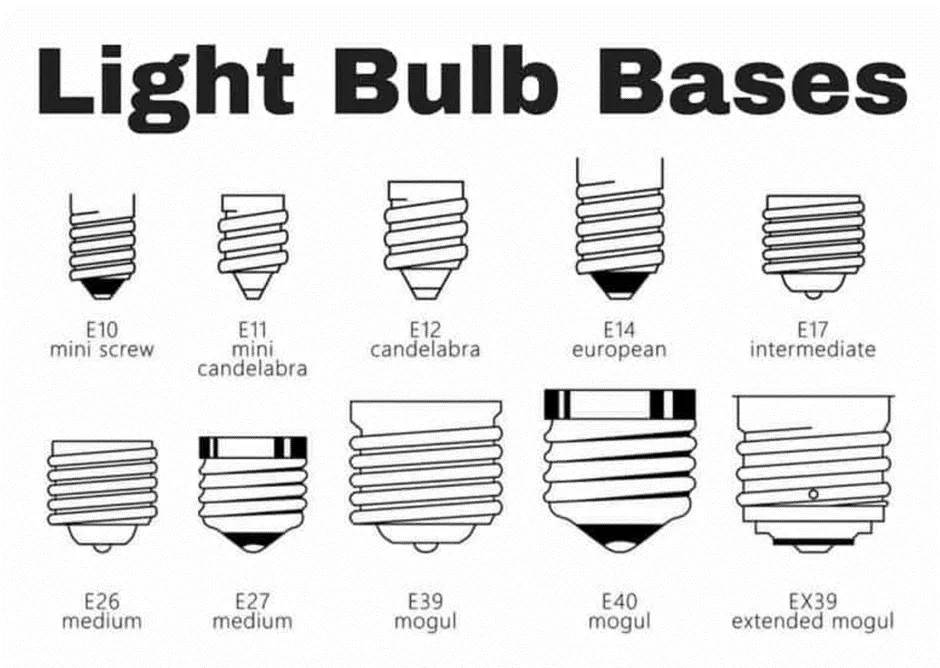
As can be seen in the figure provided above (Fig 1), light bulb bases come in various shapes and sizes. Without the proper or compatible base, you will not be able to connect the light bulb with the dedicated socket and vice versa.
Similarly, it is not wise to use a mismatched base with a mismatched socket. It could spell danger for both the bulb and the socket. As it could permanently damage them both. Or sometimes the switch might have to be fixed.
It could also create electrical hazards for your circuitry and household in case of electrical fires. However, you may choose to install adapters within your socket to fit bulbs with mismatched bases.
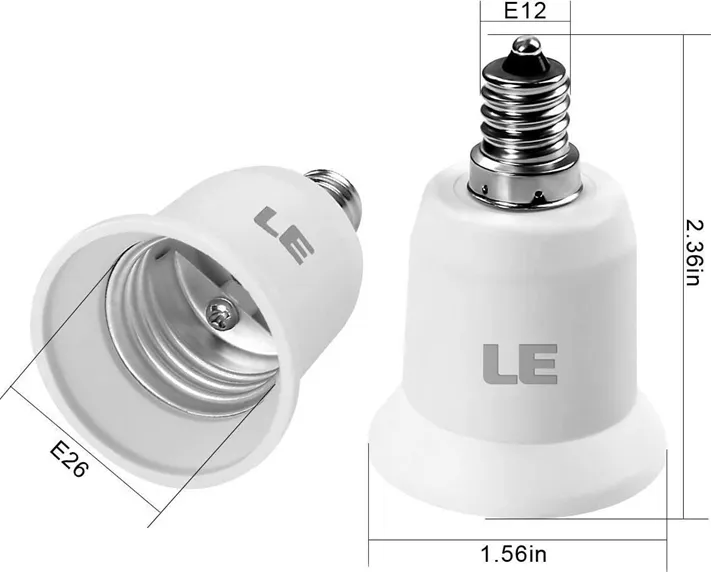
But before you opt for such adapters, make sure that both the type of your socket and the type of your base are matched with the adapter. For example, the above figure (Fig 2) showcases a light socket adapter that converts LE E12 to E26.
What are the Different Bases Available for a Light Bulb?
There are a variety of light bulb bases available for various types of sockets. I will provide a chart below for a variety of bases available.
How do I know what screw base my light bulb is? Follow the chart below to get a better understanding of the entire structure and identification of light bulb bases.
Light Bulb Base Sizes Chart
| Designation | Base Major Diameter (mm) | Name | Application |
| E5 | 5 mm | Lilliput Edison Screw (LES) | Indicator lights, decorative lights |
| E10 | 10 mm | Miniature Edison Screw (MES) | Flashlights, bicycle lights |
| E11 | 11 mm | Mini-Candelabra Edison Screw (mini-can) | 120 V halogen mini-candelabra |
| E12 | 12 mm | Candelabra Edison Screw (CES), C7 | 120 V candelabra/night lamp |
| E14 | 14 mm | Small Edison Screw (SES) | 230 V candelabra/chandelier, night lamps, and some pendant lights |
| E17 | 17 mm | Intermediate Edison Screw (IES), C9 | 120 V appliance |
| E26 | 26 mm | Medium Edison Screw (ES or MES) Standard | 120 V lamps |
| E27 | 27 mm | [Medium] Edison Screw (ES) Standard | 230 V lamps |
| E29 | 29 mm | [Admedium] Edison Screw (ES) | Lamps around 250 Watts |
| E39 | 39 mm | Single-contact (Mogul- in America) Goliath Edison Screw (GES) | 120 V 250+ W industrial |
| E40 | 40 mm | (Mogul) Goliath Edison Screw (GES) | 230 V 250+ W industrial |
So, how do I know what base my light bulb is? You can easily measure the base major diameter of your light bulb base, and try to match it with the chart provided above. If the diameter matches the ones provided above, simply refer to its designation.
One small trick can make this easier, however. Notice the designation carefully. If the model name is “Ex” or “Exx”, the “x” or “xx” generally denotes the diameter of the major base.
For example, “E5” means that the diameter is 5 mm. And similarly, “E26” means that the diameter is 26 mm.
How Can I Determine the Base of My Light Bulb?
There are many diverse applications for light bulbs, each of which has its requirements for space, security, and toughness. So, what size is my light bulb? The manner they connect to the socket and the type of connection they use can satisfy each of these various criteria.
The most common connectors, in general, are two-pin connections, screw bases, festoon bases, or bayonet bases. These connections come in a variety of sizes, but no matter what size they are, they all function similarly.
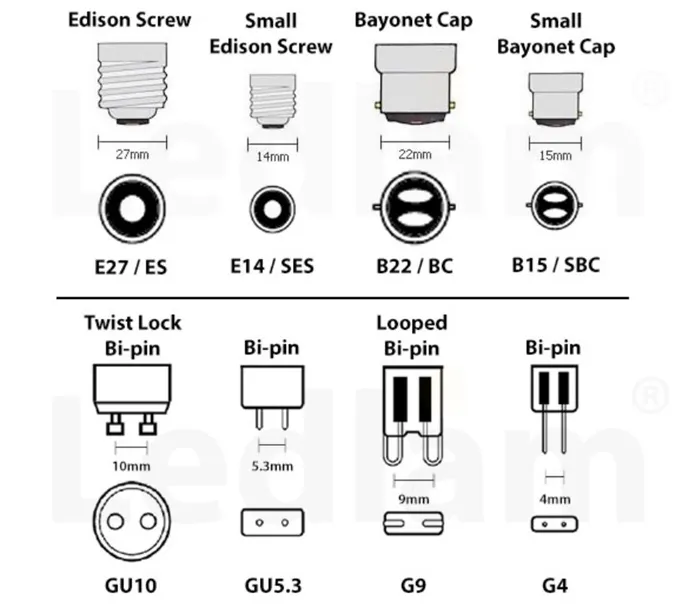
You may use the figure provided above (Fig 3), to identify the type of light bulb base you have by matching it with the chart. These are some of the common light bulb bases used in households today.
But it is not limited to these few bases only. If you look online, you will find several charts with numerous bases available. One of the easiest ways to find out what base you have is to check out the box of the light bulb, if available. It is most of the time written on the packaging or showcased.
But what is the standard light bulb base? The answer is E26, which is 26 mm in diameter.
How Can Light Bulb Bases Affect the Performance?
Different bases can affect how electricity flows into the light bulbs. While some light bulbs require the entirety of the line voltage, others may only need a fraction of it. To regulate this change in the input voltage of the light bulbs, different bases are necessary for different voltages.
As stated above, some light bulbs require line voltage to operate at their full capacity, which in the United States of America, is around 120 Volts. But take LED lamps for example. They do not require a such magnitude of electricity to function.
Hence, they may use a separate base, which is only suitable for using such low voltage bulbs. Thus, light bulb bases can affect how much electricity passes through to the light bulb. As different bases dictate where and how to use them.
Interchanging these bases is not possible. As they simply will not fit into other sockets. Or even if they do, the difference in the voltage or power, may permanently damage the light bulb and render it useless.
Summary
So, how do I know what base my light bulb is? Hopefully, this article has been able to guide you towards that answer. I have gone through all of the necessary points necessary to gain enough understanding of the matter so that you may take such decisions yourself.
I hope now you will be able to identify different light bulb bases, and also be able to choose the perfect one for your household sockets and necessities.
References:

![How To Remove Plastic Ceiling Light Cover? [3 Methods]](https://wiringsolver.com/wp-content/uploads/2021/09/How-To-Remove-Plastic-Ceiling-Light-Cover.webp)
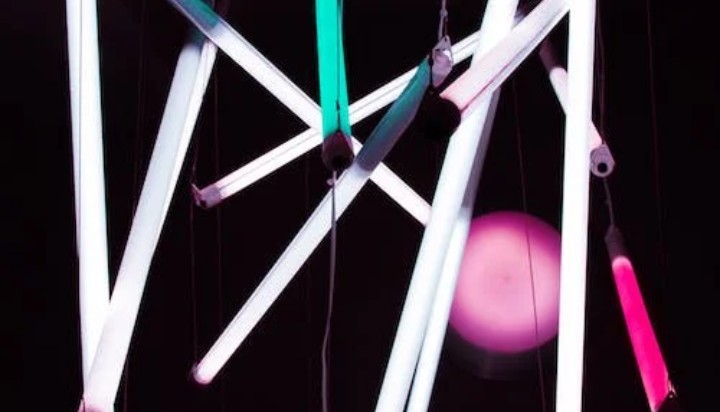
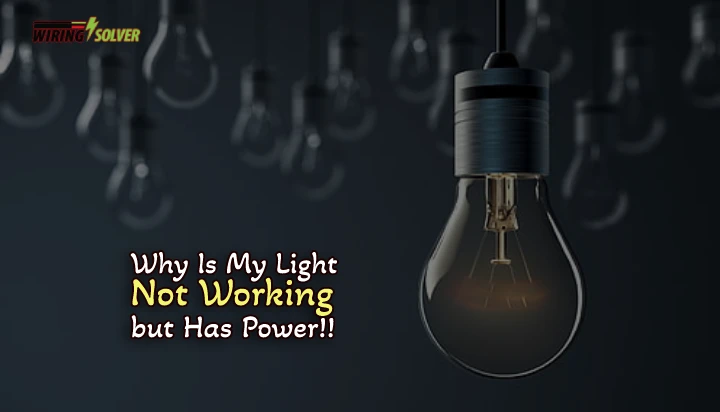
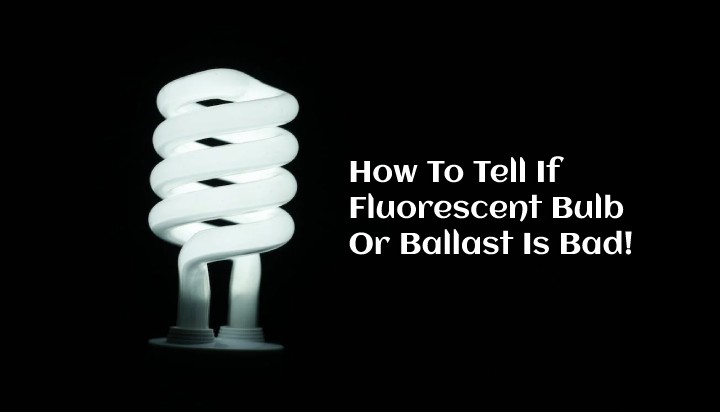
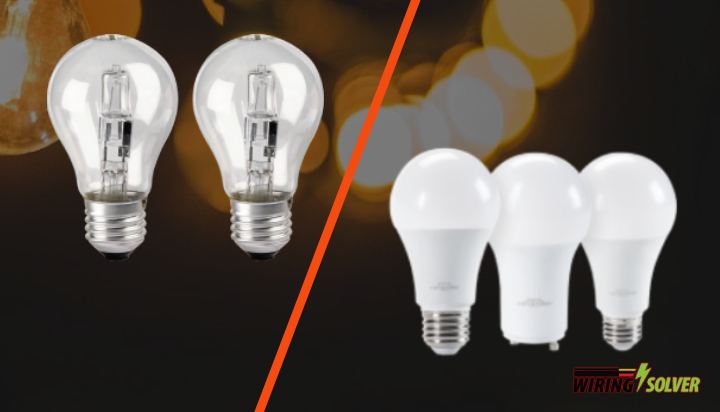
![Fluorescent Light Is Flickering [Cracked The Fix!]](https://wiringsolver.com/wp-content/uploads/2023/02/Fluorescent-Light-Is-Flickering.jpeg)